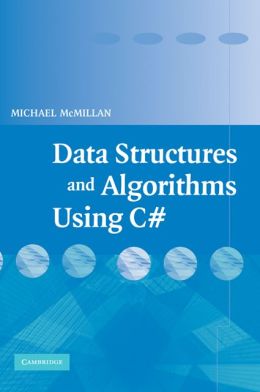Algorithm In C Sedgewick Pdf

Description • Copyright 1999 • Dimensions: 7-3/4' x 9-1/4' • Pages: 752 • Edition: 3rd • Book • ISBN-10: 0-201-35088-2 • ISBN-13: 978-0-201-35088-3 Robert Sedgewick has thoroughly rewritten and substantially expanded and updated his popular work to provide current and comprehensive coverage of important algorithms and data structures. Christopher Van Wyk and Sedgewick have developed new C++ implementations that both express the methods in a concise and direct manner, and also provide programmers with the practical means to test them on real applications.

Many new algorithms are presented, and the explanations of each algorithm are much more detailed than in previous editions. A new text design and detailed, innovative figures, with accompanying commentary, greatly enhance the presentation. The third edition retains the successful blend of theory and practice that has made Sedgewick's work an invaluable resource for more than 250,000 programmers! This particular book, Parts 1n4, represents the essential first half of Sedgewick's complete work. It provides extensive coverage of fundamental data structures and algorithms for sorting, searching, and related applications. Although the substance of the book applies to programming in any language, the implementations by Van Wyk and Sedgewick also exploit the natural match between C++ classes and ADT implementations. Downloads Source Code Source Code This file contains the code from 'Algorithms in C++, Third Edition, Parts 1-4,' by Robert Sedgewick, and is covered under the copyright and warranty notices in that book.
Algorithms In C Robert Sedgwick Pdf Free 5d80d7912b Algorithms in C++ Part 5: Graph Algorithms (3rd Edition) (Pt.5) - Ebook s3-eu-west-1.amazonaws.com//free-ebooks-download4148.pdf. Feb 6, 2012 Th. Dragimatartrus says a year ago Last edited @. C++ Textbooks - Textbooks Used Textbooks Cheap Textbooks. Software developers and computer scientists have eagerly awaited this comprehensive revision of Robert Sedgewick's landmark texts on algorithms for C. Sedgewick has completely revamped all five sections, illuminating today's best algorithms for an exceptionally wide range of tasks. This shrink-wrapped package brings.
Permission is granted for this code to be used for educational purposes in association with the text, and for other uses not covered by copyright laws, provided that the following notice is included with the code: 'This code is from 'Algorithms in C++, Third Edition, Parts 1-4,' by Robert Sedgewick, Addison Wesley Longman, 1998.' Commercial uses of this code require the explicit written permission of the publisher. Send your request for permission, stating clearly what code you would like to use, and in what specific way, to:.
Supplements Click below for Supplements related to this title.
Animated visualization of the quicksort algorithm. The horizontal lines are pivot values. Class O( n 2) O( n log n) (simple partition) or O( n) (three-way partition and equal keys) O( n log n) O( n) auxiliary (naive) O(log n) auxiliary (Sedgewick 1978) Quicksort (sometimes called partition-exchange sort) is an, serving as a systematic method for placing the elements of an in order.
Developed by in 1959 and published in 1961, it is still a commonly used algorithm for sorting. When implemented well, it can be about two or three times faster than its main competitors, and. [ ] Quicksort is a, meaning that it can sort items of any type for which a 'less-than' relation (formally, a ) is defined.
Download Gambar Animasi Bergerak Lucu Terbaru. In efficient implementations it is not a, meaning that the relative order of equal sort items is not preserved. Quicksort can operate on an array, requiring small additional amounts of to perform the sorting. It is very similar to, except that it does not always choose worst-case partition. Of quicksort shows that,, the algorithm takes ( n log n) comparisons to sort n items.
In the, it makes O( n 2) comparisons, though this behavior is rare. Hospital Management System Project In Php Source Code Free Download. Contents • • • • • • • • • • • • • • • • • • • • • • • • • History [ ] The quicksort algorithm was developed in 1959 by while in the, as a visiting student.
At that time, Hoare worked in a project on for the. As a part of the translation process, he needed to sort the words of Russian sentences prior to looking them up in a Russian-English dictionary that was already sorted in alphabetic order on. After recognizing that his first idea,, would be slow, he quickly came up with a new idea that was Quicksort. He wrote a program in Mercury for the partition but couldn't write the program to account for the list of unsorted segments. On return to England, he was asked to write code for as part of his new job. Hoare mentioned to his boss that he knew of a faster algorithm and his boss bet sixpence that he didn't. His boss ultimately accepted that he had lost the bet.